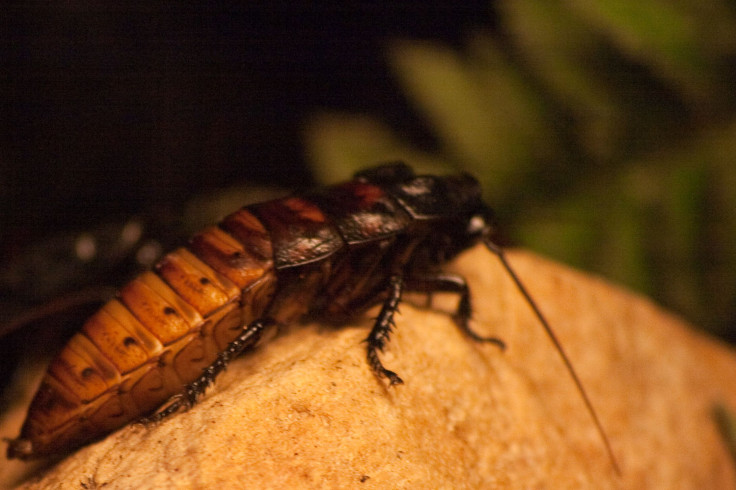Robotic Roaches May Soon Help Disaster Recovery, As Swarms Crawl Through Collapsed Buildings [VIDEO]

In a new twist on The Metamorphosis, Gregor Samsa might awaken one morning as a giant insect driven not by a Kafkaesque sense of detachment but by Microsoft's Kinect software.
The growing symbiosis of man and machine: roboticists are not only developing synthetic animal-like creatures but hijacking biological systems evolved over millions of years on earth — the cockroach, a family comprising some 4,500 species, including Periplaneta Americana.
To develop unmanned robotic systems using "off-the-shelf" biology, researchers in the United States within the past five or so years have used chemical inputs to control the movement of cockroaches, and are now using an electrical interface wired to the roach's antennae and cerci, the hair-like structures of the abdomen used for navigation.
Roboticists at North Carolina State University announced Tuesday they had connected Microsoft's motion-sensing Kinect system to the newly developed electronic interface, which spurs the roach into motion by sending small electrical signals to the antennae and cerci. An electrical impulse to the antennae signals an obstacle ahead, whereas the same to the cerci mimics the effect of a detected air current nearby — causing the animal to flee from predation, or a giant human hand about to smash it.
Alper Bozkurt, an assistant professor of electrical and computer engineering there, is studying the roach's response to the remote control system with the intention to develop ways to autopilot roaches in the mapping of dynamic environments, such as collapses buildings during a disaster recovery response.
"Our goal is to be able to guide these roaches as efficiently as possible, and our work with Kinect is helping us do that," Bozkurt told reporters. "We want to build on this program, incorporating mapping and radio frequency techniques that will allow us to use a small group of cockroaches to explore and map disaster sites."
The program then uses the Microsoft tracking data to automatically steer the roach along the intended course, like an unmanned aerial vehicle with a preprogrammed flight plan.
"The autopilot program would control the roaches, sending them on the most efficient routes to provide rescuers with a comprehensive view of the situation," Bozkurt said.
For after-market tune-ups, the Kinect program also allows researchers to collect data on how roaches respond to the electrical signals from the interface, important for refining the control of the animals to an even greater degree of precision. In a disaster recovery application, the roaches — deployed en mass — would scatter throughout a collapses building, for example, equipped with microphones and other sensors, to detect survivors.
"We may even be able to attach small speakers, which would allow rescuers to communicate with anyone who is trapped," Bozkurt said.
Naturally, the technology also has military applications.
Below are videos of remotely controlled cockroaches, the first demonstrating the roach robot piloted by Kinect:
Source: Whitemore E. Kinect-based System for Automated Control of Terrestrial Insect Biobots. 2013.



























